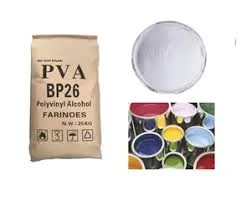Exploring the Industrial Applications of HPMC Revolutionizing the Manufacturing Sector
Hydroxypropyl methylcellulose (HPMC) is a cellulose ether widely used in various industrial applications due to its unique properties. As a non-toxic, biodegradable polymer, HPMC has gained prominence in numerous sectors, including pharmaceuticals, food processing, construction, and personal care. This article delves into the significance of HPMC in industrial applications, highlighting its functionalities, benefits, and the future outlook of this versatile substance.
What is HPMC?
HPMC is synthesized through the modification of cellulose, a natural polymer derived from plant materials. By substituting hydroxyl groups in cellulose with hydroxypropyl and methyl groups, HPMC acquires enhanced solubility and film-forming capabilities. This modification elevates HPMC's properties, making it an invaluable asset in various industrial applications.
Applications in the Pharmaceutical Industry
One of the most critical applications of HPMC lies in the pharmaceutical sector. HPMC serves as an excipient in drug formulations, aiding in controlled drug release and improving the stability of active pharmaceutical ingredients (APIs). Due to its water-retaining abilities, HPMC ensures that the drugs maintain their efficacy throughout their shelf life. Furthermore, its gel-forming properties allow for the development of sustained-release formulations, which enhance patient compliance by reducing the frequency of dosing.
In addition to its role in drug delivery systems, HPMC is also utilized as a binder in tablet formulations. It improves the mechanical strength of tablets, thus making them less susceptible to breakage during handling and storage. The versatility of HPMC allows pharmaceutical manufacturers to create formulations tailored to meet specific therapeutic needs.
HPMC in Food Processing
The food industry has also recognized the benefits of HPMC, especially in the production of gluten-free products and as a thickening agent. HPMC is employed as an emulsifier and stabilizer in various food items, contributing to the desired texture and consistency. Its ability to retain moisture makes it ideal for improving the shelf life of baked goods and preventing staleness.
Moreover, HPMC is valued for its role in fat reduction. By forming a gel-like texture, it can effectively replace fats in products while maintaining the desired mouthfeel and flavor. This characteristic is particularly beneficial in health-conscious markets where consumers seek lower fat alternatives without sacrificing taste.
Construction Applications
industri hpmc

In the construction industry, HPMC acts as a crucial additive in cement-based products such as mortar, tile adhesives, and self-leveling compounds. Its thickening and water-retention properties enhance the workability of cement mixtures, allowing for smoother application and adherence to surfaces. This results in improved bonding properties and durability of construction materials.
Additionally, HPMC helps prevent cracking and shrinks in cementitious systems by maintaining moisture levels during the curing process. This quality is essential for ensuring the longevity and structural integrity of construction projects, ultimately leading to cost savings and enhanced performance.
Personal Care Industry
HPMC finds its application in the personal care sector, particularly in cosmetic formulations and products like creams, gels, and lotions. As a thickening agent, it enhances the stability and texture of these products, ensuring a pleasing aesthetic and user experience. Furthermore, HPMC's film-forming abilities contribute to the long-lasting effects of personal care products, making them more effective.
Moreover, the biocompatibility of HPMC makes it suitable for use in sensitive skin formulations, where safety is paramount. Its non-irritating nature has led to its preference in various skincare products, highlighting the growing trend of incorporating safe and sustainable ingredients in personal care lines.
Future Outlook
The potential applications of HPMC continue to expand as industries evolve and seek sustainable and efficient solutions. The growing emphasis on environmentally friendly products has led to a surge in demand for biodegradable materials like HPMC. As regulations surrounding product safety and environmental impact tighten, HPMC’s role in various sectors is poised to become increasingly significant.
Research into the synergistic effects of HPMC with other natural polymers could unlock new opportunities for customization in formulations across industries. Emergent technologies in polymer modification can enhance HPMC’s properties, making it even more versatile and effective.
Conclusion
In summary, Hydroxypropyl methylcellulose (HPMC) serves as a crucial component across numerous industries, demonstrating its versatility and adaptability. Its unique properties contribute significantly to innovations in pharmaceuticals, food processing, construction, and personal care. As industries strive for more sustainable practices and products, HPMC stands at the forefront of this transformation, promising a future enriched with efficiency, safety, and environmental consciousness.
-
Rdp Powder: Key Considerations for Wholesalers in the Building Materials IndustryNewsJul.08,2025
-
Key Considerations for Wholesalers: Navigating the World of Hpmc - Based ProductsNewsJul.08,2025
-
Hpmc Detergent: Key Considerations for WholesalersNewsJul.08,2025
-
Key Considerations for Wholesalers: China Hpmc For Tile Adhesive, Coating Additives, Concrete Additives, and MoreNewsJul.08,2025
-
Crucial Considerations for Wholesalers: Navigating the World of Construction MaterialsNewsJul.08,2025
-
Key Considerations for Wholesalers Sourcing Additive For Cement, Additive For Concrete, Additive For Putty from Additive Manufacturer Shijiazhuang Gaocheng District Yongfeng Cellulose Co., Ltd.NewsJul.08,2025




